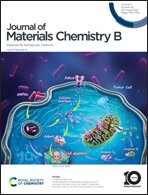Recent advances in glucose-oxidase-based nanocomposites for diabetes diagnosis and treatment
Abstract
Glucose oxidase (GOx) has attracted a lot of attention in the field of diabetes diagnosis and treatment in recent years owing to its inherent biocompatibility and glucose-specific catalysis. GOx can effectively catalyze the oxidation of glucose in the blood to hydrogen peroxide (H2O2) and glucuronic acid and can be used as a sensitive element in biosensors to detect blood glucose concentrations. Nanomaterials based on the immobilization of GOx can significantly improve the performance of glucose sensors through, for example, reduced electron tunneling distance. Moreover, various insulin-loaded nanomaterials (e.g., metal–organic backbones, and mesoporous silica nanoparticles) have been developed for the control of blood glucose concentrations based on GOx catalytic chemistry. These nano-delivery carriers are capable of releasing insulin in response to GOx-mediated changes in the microenvironment, allowing for a rapid return of the blood microenvironment to a normal state. Therefore, glucose biosensors and insulin delivery vehicles immobilized with GOx are important tools for the diagnosis and treatment of diabetes. This paper reviews the characteristics of various GOx-based nanomaterials developed for glucose biosensing and insulin-responsive release as well as research progress, and also highlights the current challenges and opportunities facing this field.

- This article is part of the themed collection: Journal of Materials Chemistry B Recent Review Articles

 Please wait while we load your content...
Please wait while we load your content...